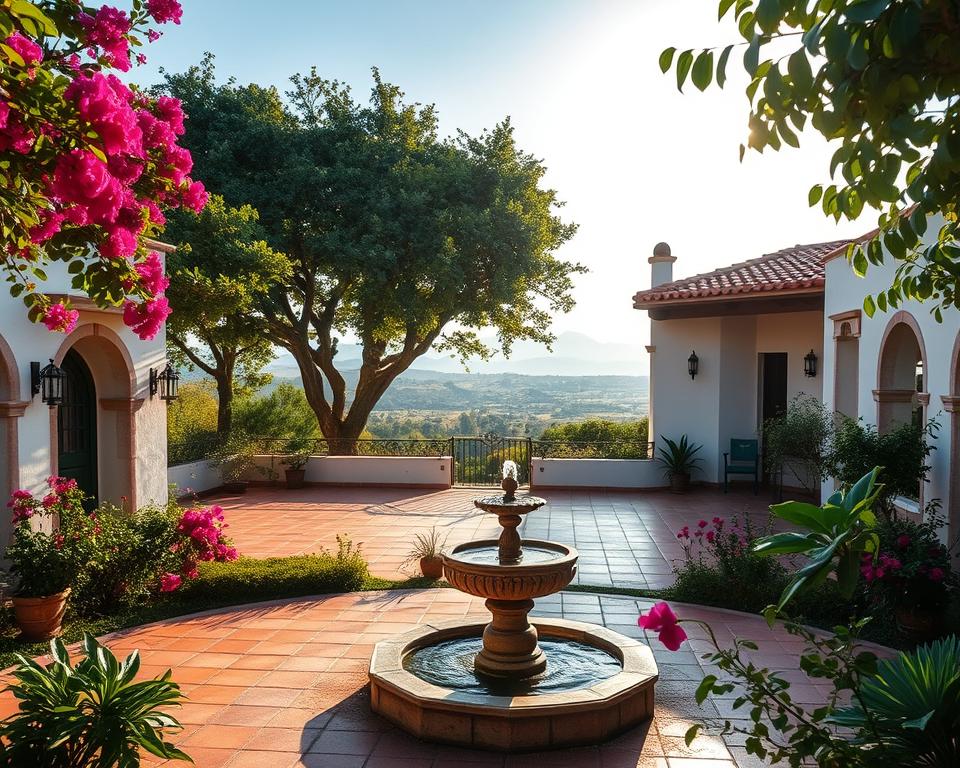Imagine waking up to the warm Mexican sun, surrounded by rich culture and vibrant communities. For many, retirement is about more than just financial planning; it’s about finding a place to truly live. Mexico has become a haven for over 2 million expatriates, drawn by its welcoming atmosphere and diverse landscapes.
As you consider making Mexico your home, it’s essential to plan carefully. Understanding the cost of living in this beautiful country is crucial. From healthcare options to cultural differences, there’s much to explore.
This guide will walk you through the practical aspects of retiring in Mexico, helping you make an informed decision about your future.
Table of Contents:
- Why Mexico Has Become a Top Retirement Destination
- Understanding the Cost of Living for Retirees
- Visa and Residency Requirements
- Healthcare Options for Retirees in Mexico
- Housing: Buying vs. Renting Property
- Top Retirement in Mexico Destinations
- Financial Planning for Your Mexican Retirement
- Understanding Taxes as an American Expat
- Social Security and Medicare Considerations
- Safety Considerations for Retirees
- Cultural Adaptation and Language
- Transportation and Getting Around
- Connecting with Expat Communities
- Step-by-Step Moving Plan
- Common Mistakes to Avoid When Retiring in Mexico
- Conclusion: Is Retirement in Mexico Right for You?
Why Mexico Has Become a Top Retirement Destination
Mexico has emerged as a premier retirement destination, offering a unique blend of cultural richness and natural beauty. This attractiveness can be attributed to several key factors that make Mexico an ideal location for retirees.
Proximity to the United States
One significant advantage of Mexico is its proximity to the United States. This closeness makes it easy for retirees to stay connected with family and friends back home, as well as to travel back and forth as needed. The ease of travel between the two countries simplifies the process of maintaining ties to one’s home country while enjoying the benefits of living in Mexico.
Expat Population and Communities
Mexico boasts a large and welcoming expat population, with many communities tailored specifically to foreign retirees. Cities like San Miguel de Allende and Puerto Vallarta have become hubs for expatriates, offering a range of social activities, cultural events, and support networks that make integrating into Mexican life easier. The presence of these communities helps alleviate the challenges of adapting to a new country.
Climate Variety and Natural Beauty
Mexico’s diverse geography offers a wide range of climates and landscapes, from tropical beach destinations to temperate mountain highlands. Retirees can choose to live in areas that suit their preferences, whether that’s the warm weather of coastal regions or the mild climate of highland cities. The country’s natural beauty, including pristine beaches, lush jungles, and dramatic mountain ranges, provides endless opportunities for outdoor activities and exploration. This variety allows retirees to select a lifestyle that suits their desires, whether that’s an active, outdoor lifestyle or a more relaxed pace of living in a picturesque setting.
Understanding the Cost of Living for Retirees
Mexico’s affordable lifestyle and welcoming environment make it a top choice for retirees looking to maximize their retirement budget. The country’s cost of living is significantly lower compared to the United States, allowing retirees to enjoy a higher quality of life.
Monthly Budget Expectations
When planning for retirement in Mexico, understanding monthly budget expectations is crucial. Many retirees find that their monthly expenses are significantly lower than in the U.S., thanks to affordable housing, food, and healthcare. A typical monthly budget can vary widely depending on lifestyle choices, but most retirees report being able to live comfortably on a budget that would be considered modest in the United States.
Comparing Costs: Mexico vs. United States
The difference in the cost of living between Mexico and the U.S. is substantial. Everyday expenses such as groceries, dining out, and transportation are generally lower in Mexico. For instance, meals at local restaurants are affordable, and public transportation is both cheap and convenient. This disparity in living costs means that retirees can enjoy a more luxurious lifestyle on their retirement income.
Luxury Living on a Middle-Class Budget
One of the most appealing aspects of retiring in Mexico is the ability to afford luxuries that would be out of reach on a middle-class income in the U.S. Retirees can enjoy regular household help, gardeners, and even personal chefs, enhancing their quality of life. With the savings from lower living costs, many retirees can also indulge in hobbies, travel, and other leisure activities, making their retirement years truly fulfilling.
By carefully planning their budget and taking advantage of Mexico’s affordable cost of living, retirees can enjoy a rich and satisfying lifestyle that maximizes their retirement income.
Visa and Residency Requirements
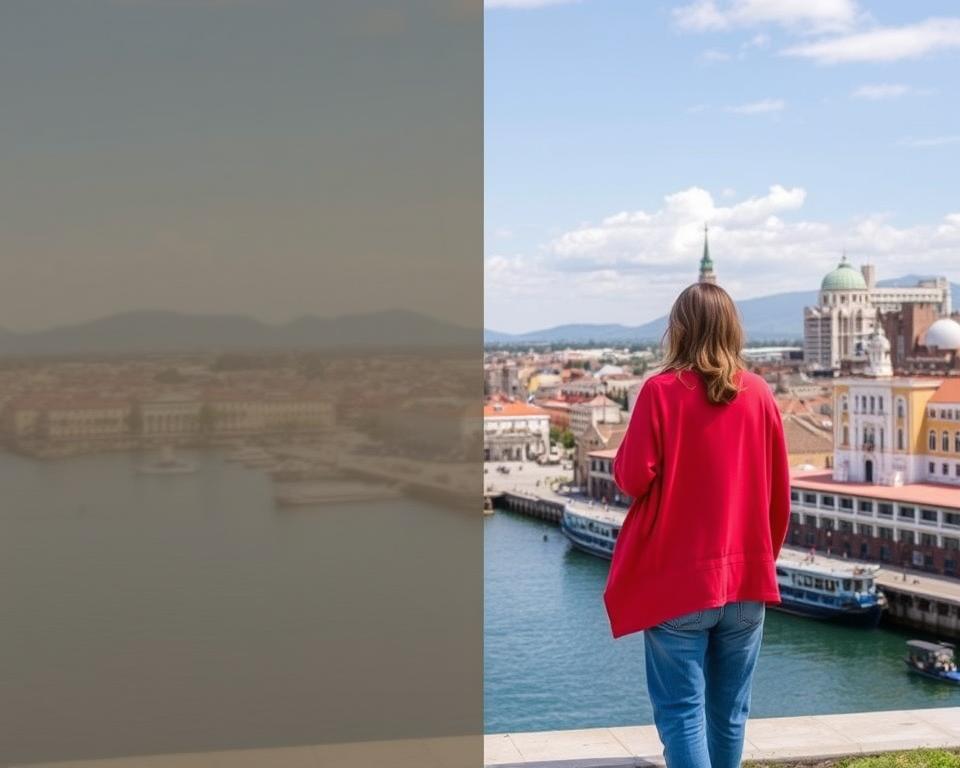
To retire in Mexico, it’s essential to navigate the country’s visa and residency requirements. Understanding these processes can help you make informed decisions about your retirement plans.
Tourist Visa Options
For those considering Mexico as a retirement destination, the first step often involves entering the country on a tourist visa. This visa allows for stays of up to 180 days and is relatively straightforward to obtain. However, it’s crucial to understand that a tourist visa does not permit work or long-term residency.
Temporary Resident Visa Process
The application process for a temporary resident visa begins at a Mexican consulate in your home country. The consulate will provide the necessary criteria and forms, which are typically in Spanish. You’ll need to demonstrate that you can support yourself financially while living in Mexico, with requirements varying by consulate.
Permanent Resident Visa Process
The Permanent Resident Visa (Residente Permanente) offers indefinite legal residency in Mexico without renewal requirements. Applicants can directly apply if they meet higher financial thresholds, typically a monthly income of around $4,300 for an individual. Alternatively, permanent residency can be achieved through family ties to Mexican citizens or after four years of temporary residency.
- The Permanent Resident Visa provides long-term stability and security.
- Applicants must meet specific financial requirements or have family connections.
- Permanent residents enjoy nearly all the rights of Mexican citizens, except voting.
Healthcare Options for Retirees in Mexico

For American retirees, Mexico’s healthcare presents a compelling alternative with its mix of public and private services. The country’s healthcare system is known for being both affordable and of high quality, making it an attractive option for those looking to retire abroad.
Quality of Mexican Healthcare
Mexican healthcare is recognized for its high standards, with many medical professionals having received training in the United States or Europe. The quality of care is generally high, with modern facilities and equipment available, especially in larger cities and tourist areas.
Key aspects of Mexican healthcare include:– Modern medical facilities– Highly trained medical professionals– Efficient service with minimal wait times
Public Healthcare Systems: IMSS and INSABI
Mexico offers public healthcare through institutions like the Instituto Mexicano del Seguro Social (IMSS) and the Instituto Nacional de Salud para el Bienestar (INSABI). These systems provide affordable healthcare options for retirees who qualify.
Benefits of public healthcare in Mexico:– Affordable access to medical services– Comprehensive coverage for various health needs– Opportunities for retirees to enroll through residency or other programs
Private Insurance and Out-of-Pocket Costs
Many retirees in Mexico opt for private healthcare, either paying out-of-pocket or through private health insurance. Private insurance policies are available at costs significantly lower than in the U.S., with annual premiums ranging from $1,000 to $3,000, depending on age and coverage.
Out-of-pocket costs in Mexico are notably affordable:– Specialist consultations typically cost between $30-$75– Prescription medications are significantly cheaper than in the U.S.– Many services are available without the long wait times common in the U.S.
Housing: Buying vs. Renting Property
When considering retirement in Mexico, one of the most critical decisions is whether to buy or rent a property. This decision hinges on various factors including personal preference, budget, and long-term plans. Mexico offers a diverse range of housing options across different regions, each with its unique characteristics and advantages.
Real Estate Costs Across Different Regions
The cost of real estate in Mexico varies significantly across different regions. Coastal areas like Puerto Vallarta and Playa del Carmen tend to have higher property prices due to their popularity among tourists and expats. In contrast, cities like Guanajuato and Mérida offer more affordable options. For instance, a home in a desirable area of a colonial city can be found for a fraction of the cost of a similar property in a beachfront location.

Rental Market Overview
The rental market in Mexico caters to a wide range of budgets and preferences. Renting can be an attractive option for retirees who are not ready to commit to buying a property or prefer the flexibility to move. Many property owners require foreigners to provide either a fiador (a co-signer who lives and owns property in Mexico) or a Póliza Jurídica (a legal protection policy) when renting long-term. Realtors and property managers can facilitate this process.
Legal Considerations for Foreign Property Owners
Foreign ownership of property in Mexico is subject to specific regulations, particularly in restricted zones within 50 kilometers of coastlines or 100 kilometers of international borders. In these areas, foreigners typically purchase property through a fideicomiso (bank trust). Outside these zones, foreigners can own property directly. It’s crucial to work with a reputable real estate attorney to ensure compliance with all legal requirements and to navigate the process smoothly.
Understanding these aspects of the Mexican housing market can help retirees make an informed decision about their housing options, ensuring a smooth transition to their new life in Mexico.
Top Retirement in Mexico Destinations
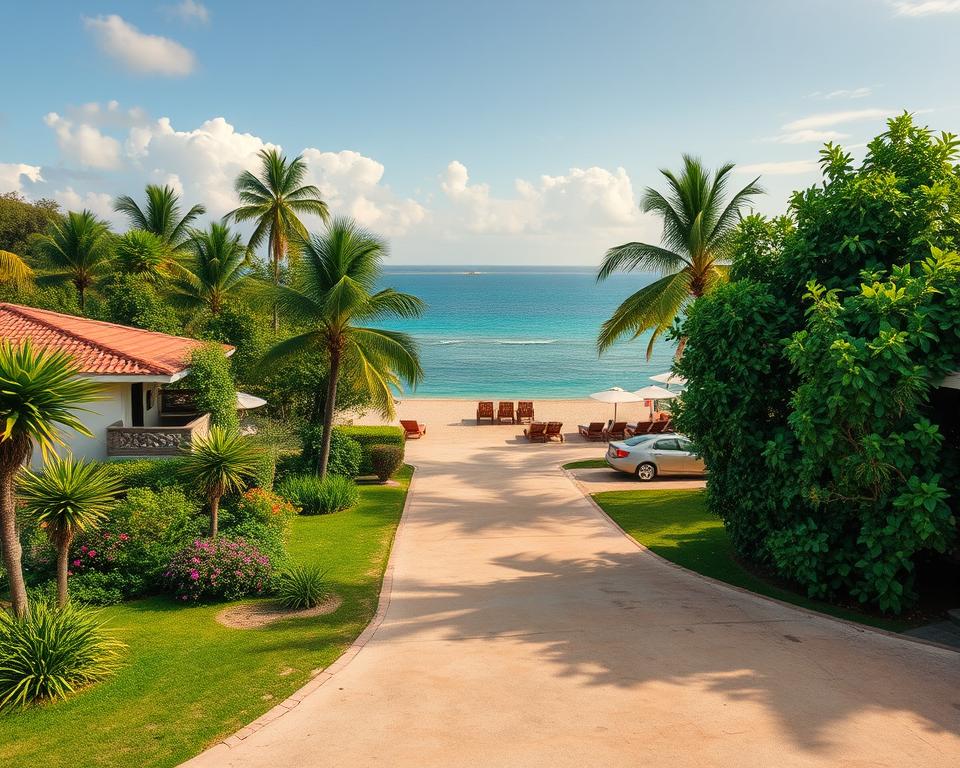
Mexico offers a diverse range of retirement destinations, each with its unique charm and advantages. Whether you’re drawn to the tranquility of a beachside town, the cultural richness of a colonial city, or the comfort of an established expat community, Mexico has something to offer.
Beach Destinations: Puerto Vallarta, Playa del Carmen, Mazatlán
Mexico’s beach destinations are a major draw for retirees. Puerto Vallarta is known for its vibrant nightlife and old-town charm, while Playa del Carmen offers a more laid-back atmosphere with access to luxury amenities. Mazatlán, with its historic center and beautiful beaches, provides a more affordable option without sacrificing quality of life.
These coastal towns not only offer a relaxed lifestyle but also a range of housing options, from apartments to luxury villas. The expat communities in these areas are active, contributing to a lively cultural scene.
Colonial Cities: San Miguel de Allende, Guanajuato, Mérida
For those who prefer a more cultural retirement experience, Mexico’s colonial cities are ideal. San Miguel de Allende is renowned for its cobblestone streets, historic architecture, and thriving arts scene. Guanajuato, a UNESCO World Heritage Site, offers a similar blend of history and culture. Mérida, known as the “City of Culture,” provides a rich cultural experience with its Mayan heritage and colonial architecture.
These cities offer a mix of traditional Mexican life and modern amenities, making them perfect for retirees who want to immerse themselves in local culture.
Lake Chapala and Ajijic: The Established Expat Haven
The Lake Chapala region, particularly the town of Ajijic, is Mexico’s largest and longest-established expatriate community, boasting thousands of American and Canadian retirees. Located near Guadalajara, Mexico’s second-largest city, the area offers a perfect blend of small-town living and access to big-city amenities, including international healthcare.
The climate at Lake Chapala is often described as one of the world’s best, with year-round spring-like temperatures. The extensive expatriate infrastructure includes English-language libraries, theaters, and clubs, making the transition to Mexican life smooth. Housing options range from modest homes to luxury villas in gated communities, catering to various budgets and lifestyle preferences.
Financial Planning for Your Mexican Retirement
Effective financial planning is crucial for a stress-free retirement in Mexico, where the cost of living can be significantly lower than in the United States. A well-planned financial strategy ensures that retirees can maintain their lifestyle without financial stress.
Banking in Mexico
When retiring in Mexico, it’s essential to understand the banking system and how to manage your money effectively. Most Mexican banks offer services tailored to expats, including online banking and English-speaking staff. Opening a local bank account can simplify financial transactions, such as receiving pension payments or paying bills.
Currency Exchange Considerations
Managing currency exchange is a critical aspect of financial planning for retirees in Mexico. Fluctuations in exchange rates can impact your budget, making it essential to monitor exchange rates and consider strategies to mitigate potential losses. Using a currency exchange service or a bank with competitive exchange rates can help.
Retirement Fund Management
Managing retirement funds while living in Mexico requires careful planning to ensure a sustainable income throughout retirement years. Most financial advisors recommend maintaining investment accounts in your home country while living in Mexico, as this provides greater security and familiar regulatory protections. Creating a diversified income stream from various sources, such as Social Security, pensions, investments, and potentially rental income, provides greater financial security.
- Managing retirement funds requires careful planning to ensure sustainable income.
- Maintaining investment accounts in your home country provides greater security.
- Creating a diversified income stream enhances financial security.
Understanding Taxes as an American Expat
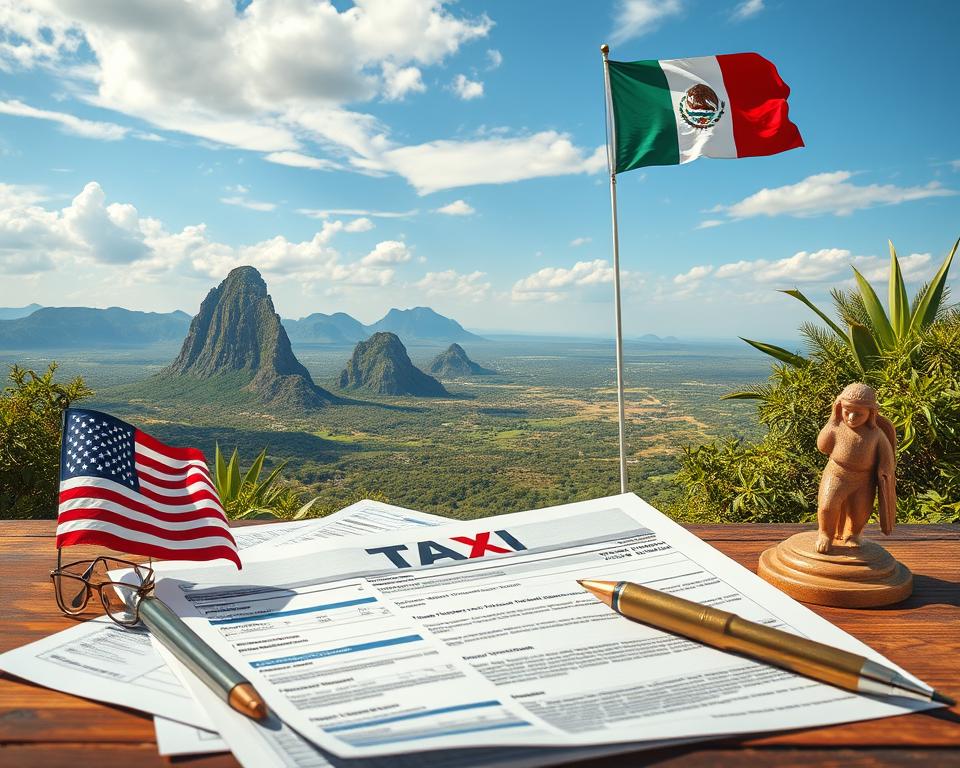
As an American expat in Mexico, navigating taxes can be complex, but understanding your obligations is crucial. The tax landscape for U.S. citizens living abroad involves both U.S. and Mexican tax laws.
U.S. Tax Obligations While Living Abroad
The U.S. taxes its citizens on their worldwide income, regardless of where they reside. This means that as an American expat in Mexico, you are required to file a U.S. tax return, reporting your global income. However, there are exclusions and credits available, such as the Foreign Earned Income Exclusion (FEIE), that can help reduce your tax liability.
Mexican Tax Responsibilities
In addition to U.S. tax obligations, American expats in Mexico must also comply with Mexican tax laws. Mexico taxes its residents on their income derived from Mexican sources. To be considered a resident for tax purposes, you must spend more than 183 days in Mexico within a calendar year. As a resident, you will be required to file a Mexican tax return, declaring your income and paying the applicable taxes.
Tax Benefits and Senior Discounts
Mexico offers various tax benefits and discounts specifically for seniors and retirees. For instance, the INAPAM card provides seniors aged 60+ with discounts on a wide range of goods and services, including public transportation, medical services, and cultural events. Additionally, some Mexican states offer tax incentives for retirees, particularly for property owners who are permanent residents. Understanding and utilizing these benefits can significantly reduce living expenses for retirees.
Social Security and Medicare Considerations
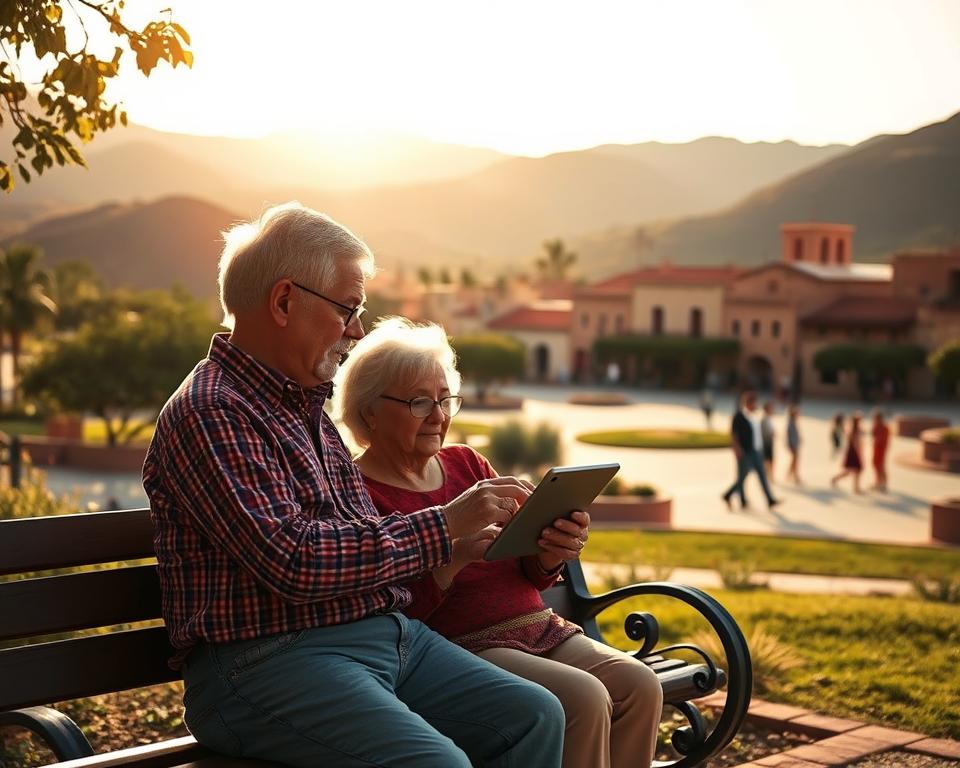
As you plan your retirement in Mexico, it’s essential to understand how your Social Security benefits and Medicare coverage will be affected. Retirees moving to Mexico need to consider how their healthcare and insurance options will change.
Receiving Social Security Benefits in Mexico
You can receive Social Security benefits while living in Mexico. The US Social Security Administration allows beneficiaries to receive payments abroad, provided they meet certain requirements.
The process involves verifying your identity and ensuring you are alive, which can be done through the US embassy or consulate in Mexico.
Medicare Coverage Limitations Abroad
Though Medicare doesn’t cover most care in Mexico (or anywhere abroad), it’s advisable to keep your Medicare coverage as a backup in case of serious illness or injury.
Some key points to consider:
- Medicare generally doesn’t cover healthcare services received outside the US.
- Many experts recommend maintaining Medicare Part B coverage, especially if you plan to return to the US for major medical treatments.
- The proximity of Mexico to the US makes it feasible to return for planned medical procedures covered by Medicare.
- Some Medicare Advantage plans offer limited emergency coverage abroad, though this typically doesn’t include routine care in Mexico.
- Retirees often create a hybrid healthcare strategy, using Mexican healthcare for routine matters while maintaining Medicare for catastrophic coverage.
Understanding these considerations can help you make informed decisions about your healthcare and financial planning for retirement in Mexico.
Safety Considerations for Retirees
Safety is a paramount consideration for retirees looking to make Mexico their home. As Lange noted,
“Having said that, it is also important for American retirees not to leave their common sense at the border,”
emphasizing the need for awareness and caution.
Understanding the Reality vs. Media Perception
The media often portrays Mexico in a negative light, focusing on crime and safety issues. However, this portrayal doesn’t always reflect the reality on the ground. Many areas popular with expats are considered safe, with low crime rates. It’s essential to understand that, like anywhere else, some areas are safer than others.
Safest Areas for Expat Retirees
Certain regions in Mexico are particularly welcoming and safe for expat retirees. These include established expat communities like Lake Chapala and Ajijic, as well as colonial cities such as San Miguel de Allende and Mérida. Researching and choosing to live in these areas can significantly enhance one’s sense of safety and community.
Practical Safety Tips
To ensure a safe living experience in Mexico, several practical tips can be followed:
- Be aware of your surroundings, especially at night, and avoid isolated areas.
- Use registered taxis or ride-sharing services instead of hailing cabs on the street.
- When driving, stick to toll roads (cuotas) and avoid driving at night in unfamiliar areas.
- Building relationships with neighbors and integrating into the local community can provide an additional layer of security.
- Learning basic Spanish phrases related to emergencies can be invaluable.
By taking these precautions and being mindful of one’s surroundings, retirees can enjoy a safe and fulfilling life in Mexico.
Cultural Adaptation and Language
Embracing the Mexican lifestyle requires more than just a change of address; it demands a cultural shift. As retirees settle into their new surroundings, understanding and adapting to the local culture becomes essential for a fulfilling experience.
Learning Spanish: Necessity or Option?
While it’s possible to live in certain areas of Mexico without speaking Spanish, learning the language can significantly enrich one’s experience. “If you don’t speak Spanish, your experience here is just not nearly as multidimensional or as rich,” says Kimsey. Even basic knowledge of Spanish can make a significant difference in interacting with the local people and appreciating the culture.
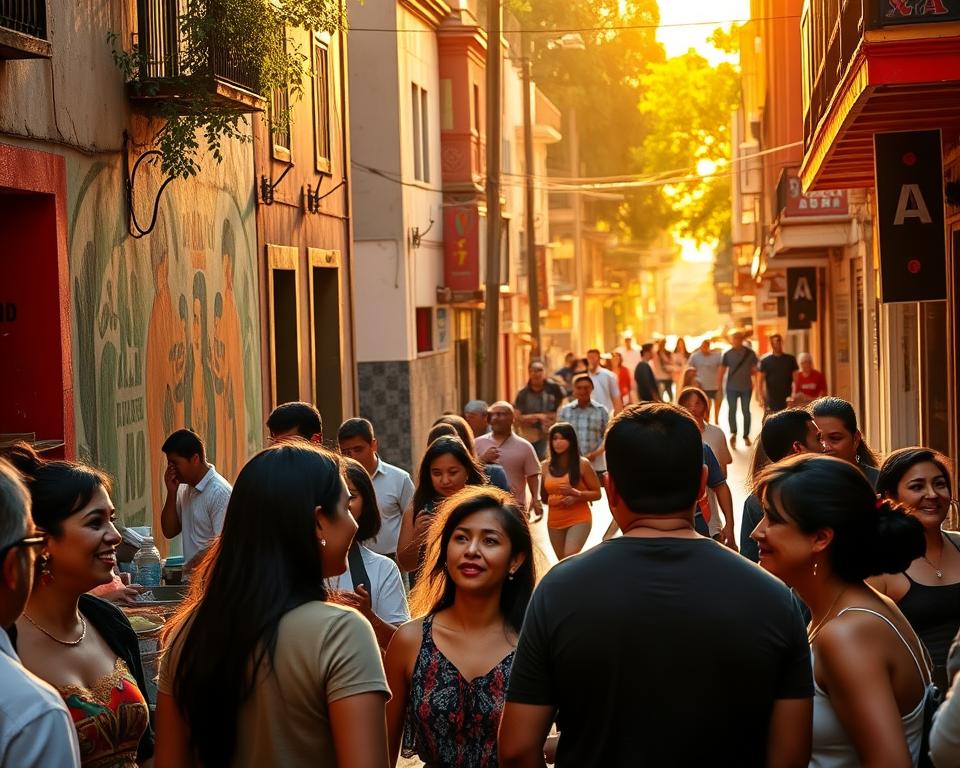
Embracing Mexican Culture and Customs
Mexican culture places a high value on relationships, family, and community, offering a refreshing change for retirees from more individualistic societies. Understanding local customs, such as greetings and social interactions, helps expatriates integrate more successfully. Mexican holidays and celebrations, like Day of the Dead and Independence Day, provide rich opportunities for cultural immersion. Additionally, exploring regional cuisines beyond tourist-oriented restaurants offers insight into local traditions. Patience and flexibility are also crucial, as the concept of time is viewed differently in Mexico, with a more relaxed approach to schedules.
By embracing these cultural nuances, retirees can adopt a more relaxed lifestyle, enjoying their retirement to the fullest while living in Mexico.
Transportation and Getting Around
Getting around Mexico can be easier than you think, with various transportation methods available. Whether you’re driving, using public transportation, or flying, Mexico has a well-developed infrastructure to suit your needs.
Driving in Mexico: Licenses and Insurance
For those who prefer to drive, Mexico allows foreigners to use their valid driver’s license for a certain period. It’s essential to research and understand the requirements for driving in Mexico, including obtaining Mexican auto insurance, which is mandatory. Make sure to check with your insurance provider to ensure you’re covered.
Public Transportation Options
Mexico’s public transportation system is comprehensive and affordable, with buses and taxis readily available in most cities. You can also use ride-hailing services like Uber, which are popular in larger urban areas. For longer distances, consider using reputable bus companies that offer comfortable and relatively affordable fares.
Flying Between Mexico and the U.S.
Mexico has excellent air connectivity with the United States, making it easy to travel back home or visit other parts of the country. With multiple airlines offering direct flights from major Mexican cities to numerous US hubs, you can save time and enjoy convenient travel options. Budget airlines like Volaris, Viva Aerobus, and Interjet provide competitive fares, often significantly cheaper than legacy carriers.
In conclusion, Mexico’s transportation options cater to various needs and preferences, ensuring that retirees can easily get around and enjoy their new life.
Connecting with Expat Communities

Expat communities in Mexico provide a welcoming environment for retirees, helping them navigate the challenges of living abroad. These communities are not just social networks; they are vital resources for information, support, and integration into Mexican life.
Finding and Joining Expat Groups
Finding the right expat group can significantly enhance your retirement experience in Mexico. Many expat communities have formed around shared interests, hobbies, or geographical locations, making it easier for newcomers to find like-minded individuals.
Professional relocation services are available in most popular expatriate destinations, offering comprehensive assistance with everything from visa applications to finding housing. Online forums and websites dedicated to expatriate life in Mexico are also valuable resources, covering topics from healthcare to cultural adaptation.
Resources and Support Networks
Once you’ve found an expat group, you’ll discover a wealth of resources and support networks. English-language publications, both print and online, offer local news and information tailored to the expatriate community. Legal and financial advisors specializing in working with foreigners can provide crucial guidance on navigating Mexican systems and requirements.
Support often extends beyond formal organizations to include informal mentoring relationships between established expats and newcomers, making the transition to living in Mexico even smoother.
Step-by-Step Moving Plan
To ensure a stress-free relocation to Mexico, it’s essential to plan ahead. A well-structured plan will help you navigate the complexities of moving abroad, ensuring that you don’t miss crucial steps along the way.
Scouting Trips and Location Research
The first step in your relocation plan should be scouting trips to potential locations in Mexico. This hands-on research will give you a firsthand experience of the culture, cost of living, and overall quality of life in different regions. It’s advisable to visit areas you’re interested in to get a feel for the community, housing options, and local amenities.
- Explore different regions to find the best fit for your retirement goals.
- Research local culture, cost of living, and amenities.
- Consider factors like climate, healthcare, and proximity to family and friends.
Working with Relocation Specialists
Engaging with reputable relocation specialists can significantly simplify your moving process. Experts like Sonia Diaz, Casey Leonard, and Liz Mundo offer valuable insights and assistance with various aspects of relocation, from finding home to navigating legal requirements.
- Sonia Diaz (Sonia@SoniaDiazMexico.com) for San Miguel de Allende and Puerto Vallarta.
- Casey Leonard (Casey@mexicotransitionalservices.com) for Mérida and the Yucatán Peninsula.
- Liz Mundo (myplaceatqueretaro@gmail.com) for Queretaro.
Timeline for a Smooth Transition
A successful move to Mexico typically requires 6-12 months of planning, starting with research and scouting trips, followed by visa applications, and logistical arrangements. It’s crucial to start the residency visa process 3-6 months before your planned move to account for varying time frames and potential delays.
- Begin planning at least 6-12 months in advance.
- Apply for residency visa 3-6 months prior to moving.
- Make decisions on housing, shipping, and vehicle importation 3-4 months in advance.
Common Mistakes to Avoid When Retiring in Mexico
As you consider retiring in Mexico, being informed about common mistakes can help you navigate the process more effectively. Retirees often face challenges that can be avoided with proper planning and understanding.
Rushing the Decision Process
Rushing into a decision without thorough research can lead to costly mistakes. It’s essential to take your time to understand the residency requirements and the implications of your choices.
- Researching different regions and their characteristics
- Understanding the costs involved in buying or renting property
- Consulting with experts to guide you through the process
Cultural Expectations and Adjustments
Understanding that “things work differently in Mexico” is crucial. Being prepared for cultural differences and potential scams targeting newcomers can save you money and stress.
Legal and Financial Pitfalls
Failing to understand legal and financial aspects, such as Mexican inheritance laws and tax obligations, can lead to complications. Proper estate planning is vital to ensure that your heirs are not faced with unnecessary challenges.
- Understanding Mexican inheritance laws
- Establishing proper estate planning for your property and assets
- Being aware of tax obligations in both Mexico and your home country
By being aware of these potential pitfalls, you can better prepare yourself for a smooth transition to retirement in Mexico.
Conclusion: Is Retirement in Mexico Right for You?
With its diverse landscapes, vibrant culture, and welcoming communities, Mexico stands out as a premier retirement destination for Americans and Canadians alike. The country’s appeal is rooted in its lower cost of living, excellent healthcare options, and diverse climate choices, making it an attractive option for retirees seeking a new lifestyle.
Many individuals have already discovered the benefits of retiring in Mexico, drawn by the country’s proximity to the United States, which facilitates visits from family and friends. As noted, “Many people have vacationed in Mexico, so they’re already familiar with some level of the culture.” This existing familiarity, combined with the ease of travel between the two countries, makes the transition smoother for retirees.
Moreover, Mexico’s healthcare system is often cited as a significant advantage, with many retirees finding that their retirement savings and Social Security benefits go much further there than in the U.S. The quality and affordability of healthcare in Mexico are compelling reasons for retirees to choose this destination.
To ensure a successful retirement in Mexico, it’s crucial to approach the decision with thorough research, extended visits, and an honest self-assessment of one’s adaptability to cultural differences. For those willing to embrace a new culture, learn some Spanish, and adjust to a different pace of life, Mexico can offer an enriching and affordable retirement experience.
Ultimately, the key to a fulfilling retirement in Mexico lies in realistic expectations, proper preparation, and an open mind toward the differences and opportunities that come with international living. By adopting this mindset, retirees can fully leverage the benefits that Mexico has to offer, enjoying a lifestyle that is both enriching and affordable.

